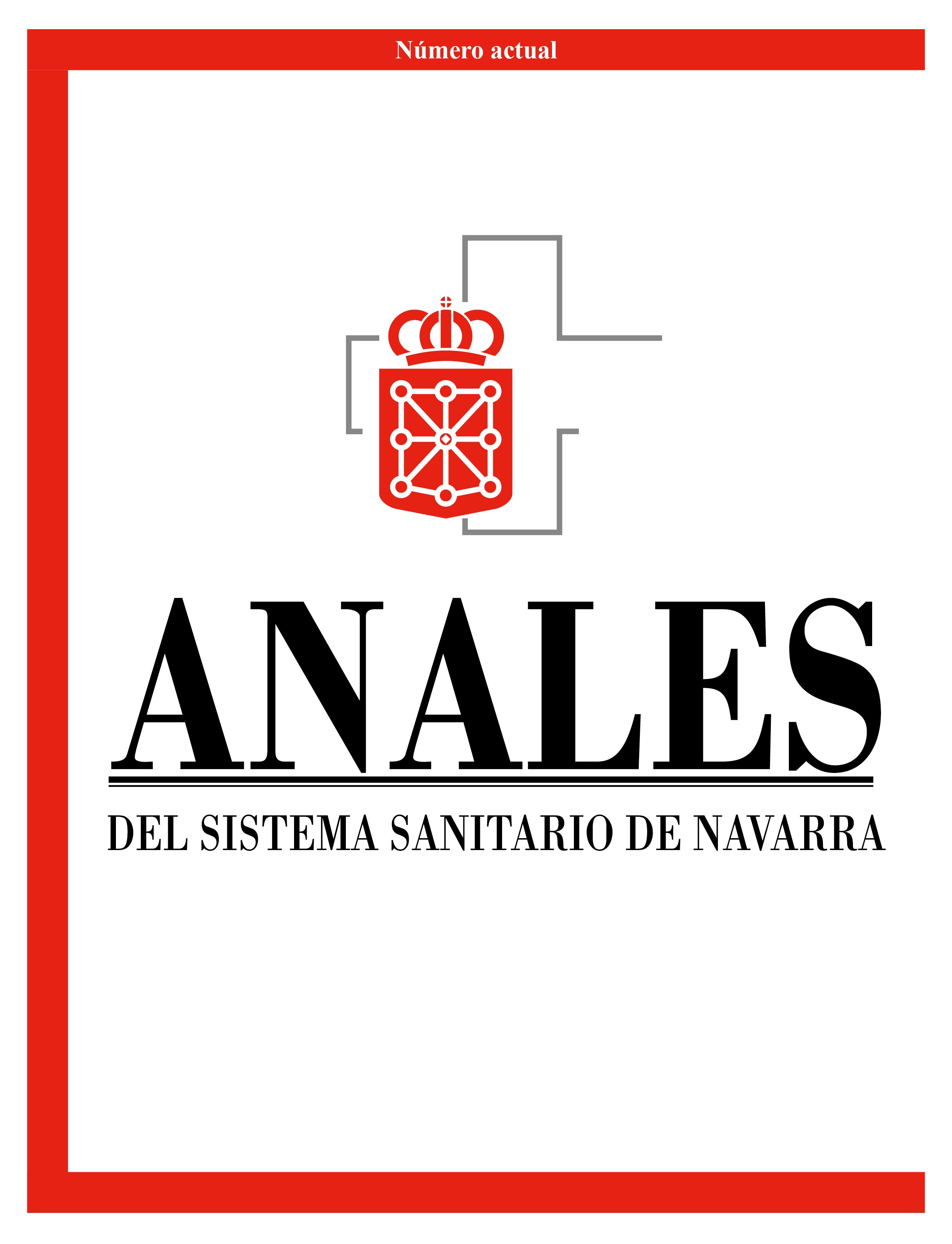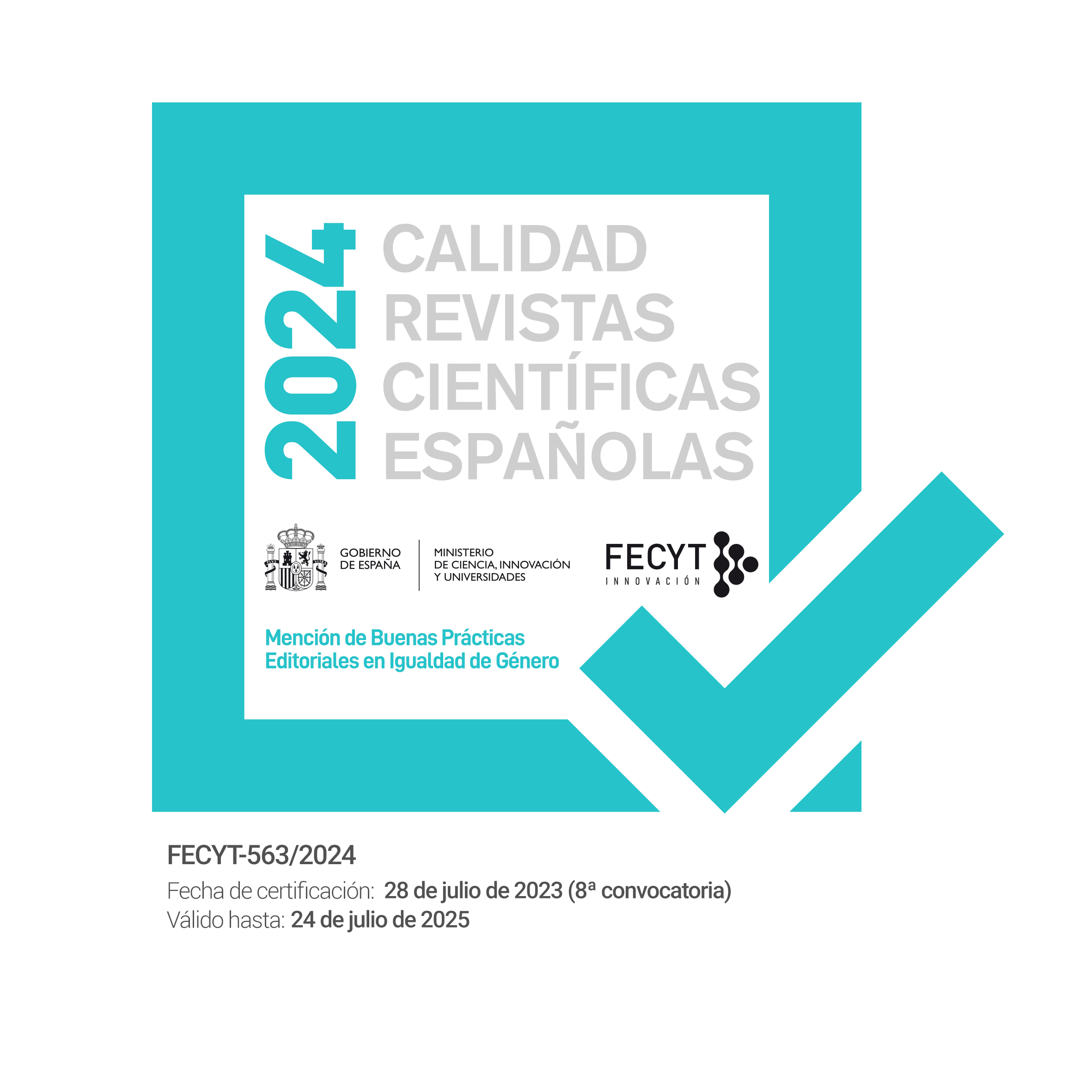Riesgos reputacionales derivados de la presencia de las enfermeras en redes sociales y propuesta de acción. El caso Vall d’Hebron
DOI:
https://doi.org/10.23938/ASSN.1095Palabras clave:
Enfermería, Redes Sociales, Oratoria, Guía, AutopercepciónResumen
Fundamento. Una enfermera española publicó en TikTok un vídeo criticando el requisito de disponer del nivel C1 de catalán para obtener plaza en el sistema sanitario público de Cataluña (España), que se viralizó en redes sociales (RRSS) y provocó la reacción de usuarios, políticos e instituciones de enfermería. El objetivo es evaluar el daño reputacional que sufrió la enfermera, su hospital y la profesión, y proponer líneas de acción para situaciones similares.
Metodología. Diseño de metodología mixta secuencial exploratoria para analizar el contenido del vídeo, el impacto que su contenido generó en prensa y RRSS, y la gestión comunicativa de la crisis realizada por el hospital implicado y los colegios de enfermería.
Resultados. La enfermera manifestó su opinión amparada por el derecho a la libertad de expresión, pero el lenguaje empleado, vestir el uniforme de un hospital concreto y la crítica al idioma fueron los factores que dañaron su reputación al difundirse por la prensa y en la conversación de Twitter/X. La reputación del hospital se vio afectada por ser identificable la enfermera como trabajadora del mismo, mientras que la del sector enfermero apenas se vio perjudicada gracias al amplio abanico de fuentes informativas que lo identificaron como un suceso aislado. Se proponen dos líneas de acción: la creación de un marco autorregulatorio seguro y de un plan de formación en RRSS lideradas por centros sanitarios, asociaciones y facultades de enfermería.
Conclusión. La reputación de la enfermera y del hospital resultaron dañadas. Se aporta un modelo metodológico para analizar situaciones similares.
Descargas
Citas
Organización Mundial De la Salud. 58a Asamblea Mundial de la Salud, Ginebra 16-25 de mayo. Ginebra; 2005 May.
INE. Encuesta sobre equipamiento y Uso de Tecnologías de Información y Comunicaicón (TIC) en los hogares. 2022.
ROSS P, CROSS R. Rise of the e-Nurse: the power of social media in nursing. Contemp Nurse 2019; 55(2-3): 211-220. https://doi.org/10.1080/10376178.2019.1641419
MESQUITA AC, ZAMARIOLI CM, FULQUINI FL, DE CARVALHO EC, ANGERAMI ELS. Social networks in nursing work processes: An integrative literature review. Revista da Escola de Enfermagem 2017; 51(1): 1-11. https://doi.org/10.1590/s1980-220x2016021603219
FERNÁNDEZ-SALAZAR S, RAMOS-MORCILLO AJ. New technologies, apps and their application in evidence-based clinical practice. Enferm Clin 2014; 24(2): 99-101. https://doi.org/10.1016/j.enfcli.2014.02.001
HERRERA-PECO I, JIMÉNEZ-GÓMEZ B, PEÑA DEUDERO JJ, BENITEZ DE GRACIA E, RUIZ-NÚÑEZ C. Healthcare Professionals’ Role in Social Media Public Health Campaigns: Analysis of Spanish Pro Vaccination Campaign on Twitter. Healthcare 2021 Jun 2; 9(6): 662. https://doi.org/10.3390/healthcare9060662
RITTER AZ, ARONOWITZ S, LEININGER L, JONES M, DOWD JB, ALBRECHT S et al. Dear Pandemic: Nurses as key partners in fighting the COVID-19 infodemic. Public Health Nurs 2021; 38(4): 603-609. https://doi.org/10.1111/phn.12903
SIEGMUND LA. Social Media: The Next Research Frontier. Clin Nurse Spec 2018; 32(2): 62-66. https://doi.org/10.1097/nur.0000000000000354
NAVARRO MARTÍNEZ O. Comunidades de práctica 2.0 en el entorno de profesionales de la salud. Enferm Clin 2011; 21(5): 235-237. https://doi.org/10.1016/j.enfcli.2011.07.005
KAKUSHI LE, ÉVORA YDM. Social networking in nursing education: integrative literature review. Rev Lat Am Enfermagem 2016; 24: e2709. https://doi.org/10.1590/1518-8345.1055.2709
CORDOŞ AA, BOLBOACA SD. Social media use among nurses: Literature review. Stud Health Technol Inform 2016; 225(4): 572-576.
MOORLEY C, CHINN T. Developing nursing leadership in social media. J Adv Nurs 2016 Mar; 72(3): 514-520. https://doi.org/10.1111/jan.12870
MOORLEY C, CHINN T. Social media participatory CPD for nursing revalidation, professional development and beyond. Br J of Nurs 2019; 28(13): 870-877. https://doi.org/10.12968/bjon.2019.28.13.870
GREGORY A, WALKER ME, ANONSON J. Social Media and Nursing Activism: A Literature Review. Canadian Journal of Nursing Informatics 2020; 17(2). https://cjni.net/journal/?p=10088
O’CONNOR S. Using social media to engage nurses in health policy development. J Nurs Manag 2017; 25(8): 632-639. https://doi.org/10.1111/jonm.12501
KRESS D, GODACK CA, BERWANGER TL, DAVIDSON PM. The new script of nursing: using social media and advances in communication - to create a contemporary image of nursing. Contemp Nurse 2018; 54(4-5): 388-394. https://doi.org/10.1080/10376178.2018.1537720
KELLY J, FEALY GM, WATSON R. The image of you: Constructing nursing identities in YouTube. J Adv Nurs 2012; 68(8): 1804-1813. https://doi.org/10.1111/j.1365-2648.2011.05872.x
GONZÁLEZ H, ERRASTI-IBARRONDO B, IRAIZOZ-IRAIZOZ A, CHOPERENA A. The image of nursing in the media: A scoping review. Int Nurs Rev 2023; 70(3): 425-443. https://doi.org/10.1111/inr.12833
SÁNCHEZ-GRAS S. Imagen de la enfermería a través de la prensa escrita ¿necesitamos visibilizar los cuidados enfermeros? Cult Cuid Rev Enferm Humanid 2017; (49):74-80. https://doi.org/10.14198/cuid.2017.49.08
GIRVIN J, JACKSON D, HUTCHINSON M. Contemporary public perceptions of nursing: a systematic review and narrative synthesis of the international research evidence. J Nurs Manag 2016; 24(8): 994-1006. https://doi.org/10.1111/jonm.12413
HOEVE Y TEN, JANSEN G, ROODBOL P. The nursing profession: public image, self-concept and professional identity. A discussion paper. J Adv Nurs 2014; 70(2): 295-309. https://doi.org/10.1111/jan.12177
BRIDGES JM. Literature review on the images of the nurse and nursing in the media. J Adv Nurs 1990; 15(7): 850-854. https://doi.org/10.1111/j.1365-2648.1990.tb01917.x
FERNÁNDEZ GARCÍA C, PÉREZ LÓPEZ ML. Así nos muestran, ¿así somos? Cultura de los Cuidados Revista de Enfermería y Humanidades 2005; IX(18): 98-101. https://doi.org/10.14198/cuid.2005.18.14
TAKASE M, MAUDE P, MANIAS E. Impact of the perceived public image of nursing on nurses’ work behaviour. Journal of Advanced Nursing 2006; 53(3): 333-334. https://doi.org/10.1111/j.1365-2648.2006.03729.x
GRINBERG K, SELA Y. Perception of the image of the nursing profession and its relationship with quality of care. BMC Nurs 2022; 21(57): 2-8. https://doi.org/10.1186/s12912-022-00830-4
KANDIL F, EL SEESY N, BANAKHAR M. Factors Affecting Students’ Preference for Nursing Education and their Intent to Leave: A Cross-sectional Study. Open Nurs J 2021; 15(1): 1-8. https://doi.org/10.2174/1874434602115010001
PRICE SL, MCGILLIS HALL L. The history of nurse imagery and the implications for recruitment: A discussion paper. J Adv Nurs 2014; 70(7): 1502-1509. https://doi.org/10.1111/jan.12289
MEIRING A, VAN WYK NC. The image of nurses and nursing as perceived by the South African public. Afr J Nurs Midwifery 2013; 15(2): 3-15.
GILLETT K. A critical discourse analysis of British national newspaper representations of the academic level of nurse education: Too clever for our own good? Nur Inq 2012; 19(4): 297-307. https://doi.org/10.1111/j.1440-1800.2011.00564.x
LANCASTER R, SANCHEZ M, MAXWELL K, MEDLEY R. TikTok’s ‘Dancing Nurses’ During the COVID-19 Pandemic: A Content Analysis. American Journal Of Nursing 2022; 122(12): 24-31. https://doi.org/10.1097/01.naj.0000901844.48930.c8
DE GAGNE JC, HALL K, CONKLIN JL, YAMANE SS, WYMAN ROTH N, CHANG J et al. Uncovering cyberincivility among nurses and nursing students on Twitter: A data mining study. Int J Nurs Stud. 2019; 89: 24-31. https://doi.org/10.1016/j.ijnurstu.2018.09.009
COOMBS WT, HOLLADAY SJ. Helping crisis managers protect reputational assets: Initial Tests of the Situational Crisis Communication Theory. Manag Commun Q. 2002; 16(2): 165-186. https://psycnet.apa.org/doi/10.1177/089331802237233
COOMBS WT. Ongoing crisis communication: Planning, managing, and responding. Nueva York: Sage, 2007.
CARROLL D. United breaks guitars: The power of one voice in the age of social media. Carlsbad: Hay House, 2012.
GRUBER DA, SMEREK RE, THOMAS-HUNT MC, JAMES EH. The real-time power of Twitter: Crisis management and leadership in an age of social media. Bus Horiz 2015; 58(2): 163-172. https://doi.org/10.1016/j.bushor.2014.10.006
AUSTIN L, FISHER LIU B, JIN Y. How Audiences Seek Out Crisis Information: Exploring the Social-Mediated Crisis Communication Model. J Appl Commun Res 2012 May; 40(2): 188-207. https://doi.org/10.1080/00909882.2012.654498
ROSHAN M, WARREN M, CARR R. Understanding the use of social media by organisations for crisis communication. Comput Human Behav 2016 Oct 1; 63: 350-361. http://doi.org/10.1016/j.chb.2016.05.016
MARIKER. Eres gilipollas. Twitter. 1 de marzo de 2023. https://x.com/Ikrmrtn/status/1630976833821736973
CRESWELL JW, PLANO VL. Designing and conducting mixed methods research. Nueva York: Sage, 2018.
BAGUR PONS S, ROSSELLÓ RAMON MR, PAZ LOURIDO B, VERGER S. El Enfoque integrador de la metodología mixta en la investigación educativa. RELIEVE - Rev Electrón Investig Eval Educ 2021; 27(1): 1-21. http://doi.org/10.30827/relieve.v27i1.21053
KRIPPENDORFF K. Content Analysis: An Introduction to Its Methodology. Content Analysis: An introduction to its methodology. Nueva York: SAGE , 2022.
Consejo Internacional de Enfermeras. Código de Ética del CIE para las enfermeras. Ginebra: Consejo Internacional de Enfermeras, 2021. 1-32 p. https://www.icn.ch/sites/default/files/2023-06/ICN_Code-of-Ethics_SP_WEB.pdf
AL-YAZIDI S, BERRI J, AL-QURISHI M, AL-ALRUBAIAN M. Measuring reputation and influence in online social networks: a systematic literature review. IEEE Access 2020; 8: 105824- 105851. http://doi.org/10.1109/access.2020.2999033
GONZÁLEZ-LUIS H, AZURMENDI A, SANTILLAN-GARCIA A, TRICAS-SAURA S. Nurses’ freedom of expression: Rights, obligations and responsibilities. J Nurs Manag. 2022; 30(7): 2379-2382. https://doi.org/10.1111/jonm.13839
HEREDIA AV. Libertad de expresión y sátira política: un estudio jurisprudencial. Rev Int Hist Comun 2014; 1(2): 86-96. https://doi.org/10.12795/RiHC.2014.i02.05
GONZÁLEZ-LUIS H. La competencia comunicativa de las enfermeras: el pilar para alcanzar una narrativa propia. TESELA Liderazgo y Gestión 2022; 30: 1-3. http://ciberindex.com/p/ts/e14041
DE GAGNE JC, CHOI M, LEDBETTER L, KANG HS, CLARK CM. An integrative review of cybercivility in health professions education. Nurse Educ 2016; 41(5): 239-245. http://doi.org/10.1097/NNE.0000000000000264
KIM SS, LEE JJ, DE GAGNE JC. Exploration of cybercivility in nursing education using cross-country comparisons. Int J Environ Res Public Health 2020; 17(19): 7209. http://doi.org/10.3390/ijerph17197209
NURSING TA. Nursing, midwifery and social media. Aust Nurs Midwifery J 2014; 32(8): 11.
MANCINO DJ. NCSBN Promotes Social Media Best Practices for Nurses. Deans Notes 2014; 35(3).
MEDINA AGUERREBERE P. La comunicación hospitalaria 2.0: un nuevo desafío para la comunicación institucional. Austral Comunicación 2012; 1(2): 189-201. http://doi.org/10.26422/aucom.2012.0102.med
TICBIOMED. Guía practica para el uso de RRSS en organizaciones sanitarias. Pharma, editor. Social Media Pharma, 2013.
Social sites continue posing risk problems. Same-Day Surgery 2010. http://www.myfoxdetroit.com/dpp/news
ZHU X, HU H, XIONG Z, ZHENG T, LI L, ZHANG L et al. Utilization and professionalism toward social media among undergraduate nursing students. Nurs Ethics 2021; 28(2): 297-310. http://doi.org/10.1177/0969733020952105
DE LAS HERAS-PEDROSA C, RANDO-CUETO D, JAMBRINO-MALDONADO C, PANIAGUA-ROJANO FJ. Exploring the social media on the communication professionals in public health. spanish official medical colleges case study. Int J Environ Res Public Health 2020; 17(13): 4859. http://doi.org/10.3390/ijerph17134859
O’CONNOR S, CHU CH, THILO F, LEE JJ, MATHER C, TOPAZ M. Professionalism in a digital and mobile world: A way forward for nursing. J Adv Nurs 2020; 76(1): 4-6. http://doi.org/10.1111/jan.14224
National Council of State Boards of Nursing. A Nurse’s Guide to the use of social media. Chicago: NCSBN, 2018. https://www.ncsbn.org/public-files/NCSBN_SocialMedia.pdf
Guidance on using social media responsibly. London: Nursing and Midwifery Council, 2016. https://www.nmc.org.uk/globalassets/sitedocuments/nmc-publications/social-media-guidance.pdf
NURSE ASSOCIATIONS OF NEW BRUNSWICK. Practice guideline Social media 2022. https://www.nanb.nb.ca/wp-content/uploads/2022/10/NANB-PracticeGuideline-SocialMedia-August22-E.pdf
CGE. El CGE abre el periodo de consulta pública para renovar el Código Deontológico de la Enfermería española [Internet]. 2024 [cited 2024 Jul 1]. Available from: https://www.consejogeneralenfermeria.org/actualidad-y-prensa/sala-de-prensa/noticias/item/122486-el-cge-abre-el-periodo-de-consulta-publica-para-renovar-el-codigo-deontologico-de-la-enfermeria-espanola
JONES S, CHUDLEIGH M, BAINES R, JONES RB. Did introducing Twitter and digital professionalism as an assessed element of the nursing curriculum impact social media related incidence of ‘Fitness to Practise’: 12-year case review. Nurse Educ Pract 2021; 50: 102950. http://doi.org/10.1016/j.nepr.2020.102950
National Council of State Boards of Nursing. White paper: a nurse’s guide to the use of social media. J Pract Nurs 2011; 61(3): 3-9. https://www.ncsbn.org/public-files/Social_Media.pdf
O’CONNOR S, ZHANG M, HONEY M, LEE JJ. Digital professionalism on social media: A narrative review of the medical, nursing, and allied health education literature. Int J Med Inform 2021; 153: 104514. https://doi.org/10.1016/j.ijmedinf.2021.104514
DEMIRAY A, ÇAKAR M, AÇIL A, ILASLAN N, SAVAS YUCEL T. Social media use and ethics violations: Nurses’ responses to hypothetical cases. Int Nurs Rev 2020; 67(1): 84-91. https://doi.org/10.1111/inr.12563
SHATTELL M, BATCHELOR M, DARMOC R. Social media in health care : A guide to creating your professional digital presence. Thorofare, NJ: Routledge, 2022. https://doi.org/10.4324/9781003526452
Publicado
Cómo citar
Número
Sección
Licencia

Esta obra está bajo una licencia internacional Creative Commons Atribución-CompartirIgual 4.0.
La revista Anales del Sistema Sanitario de Navarra es publicada por el Departamento de Salud del Gobierno de Navarra (España), quien conserva los derechos patrimoniales (copyright ) sobre el artículo publicado y favorece y permite la difusión del mismo bajo licencia Creative Commons Reconocimiento-CompartirIgual 4.0 Internacional (CC BY-SA 4.0). Esta licencia permite copiar, usar, difundir, transmitir y exponer públicamente el artículo, siempre que siempre que se cite la autoría y la publicación inicial en Anales del Sistema Sanitario de Navarra, y se distinga la existencia de esta licencia de uso.








